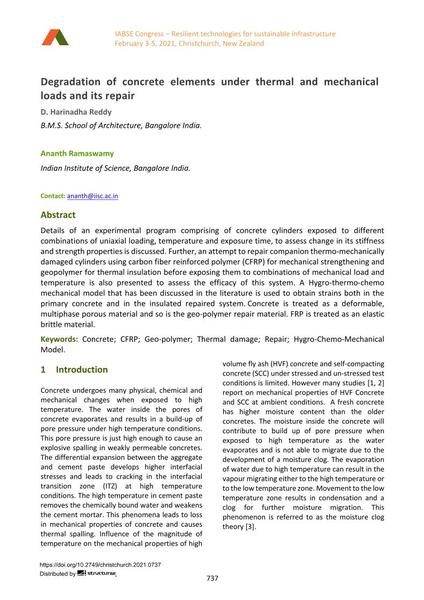Degradation of concrete elements under thermal and mechanical loads and its repair

|
|
|||||||||||
Bibliografische Angaben
| Autor(en): |
D. Harinadha Reddy
(B.M.S. School of Architecture, Bangalore India.)
Ananth Ramaswamy (Indian Institute of Science, Bangalore India.) |
||||
|---|---|---|---|---|---|
| Medium: | Tagungsbeitrag | ||||
| Sprache(n): | Englisch | ||||
| Tagung: | IABSE Congress: Resilient technologies for sustainable infrastructure, Christchurch, New Zealand, 3-5 February 2021 | ||||
| Veröffentlicht in: | IABSE Congress Christchurch 2020 | ||||
|
|||||
| Seite(n): | 737-744 | ||||
| Anzahl der Seiten (im PDF): | 8 | ||||
| DOI: | 10.2749/christchurch.2021.0737 | ||||
| Abstrakt: |
Details of an experimental program comprising of concrete cylinders exposed to different combinations of uniaxial loading, temperature and exposure time, to assess change in its stiffness and strength properties is discussed. Further, an attempt to repair companion thermo-mechanically damaged cylinders using carbon fiber reinforced polymer (CFRP) for mechanical strengthening and geopolymer for thermal insulation before exposing them to combinations of mechanical load and temperature is also presented to assess the efficacy of this system. A Hygro-thermo-chemo mechanical model that has been discussed in the literature is used to obtain strains both in the primary concrete and in the insulated repaired system. Concrete is treated as a deformable, multiphase porous material and so is the geo-polymer repair material. FRP is treated as an elastic brittle material. |
||||
| Stichwörter: |
Beton Reparatur CFRP
|
||||
